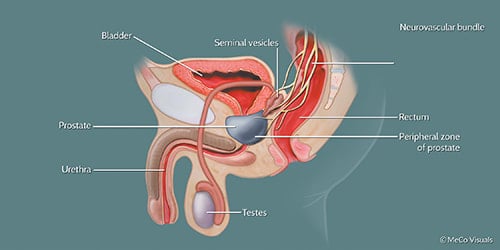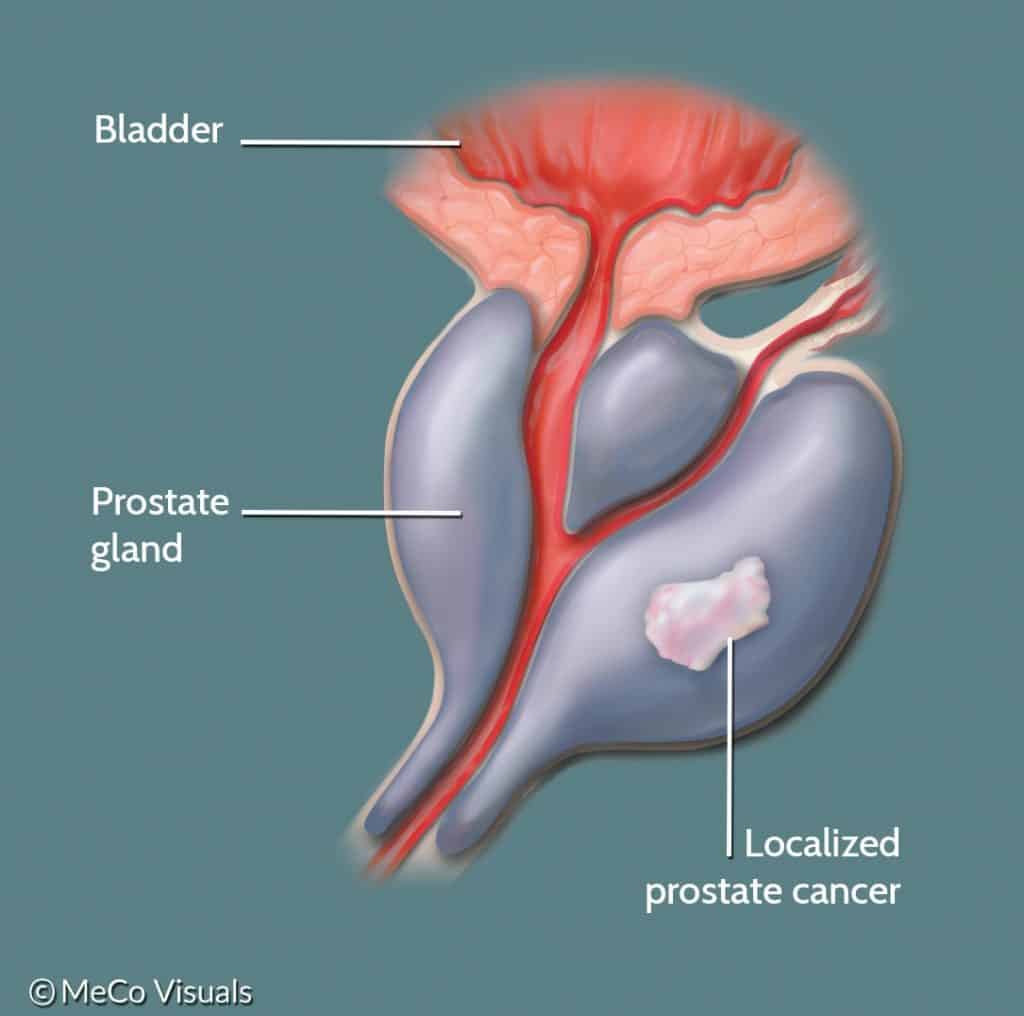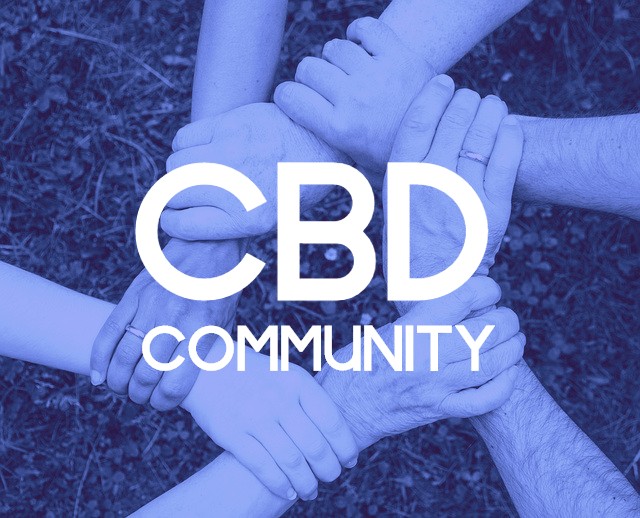Last updated on 10 August 2021
Introduction
Is this anyway familiar to you, ‘Despite leading an active lifestyle, eating a healthy diet, and sleeping well, I was shocked when I was diagnosed with prostate cancer?!’
Gentlemen! Be aware of prostate cancer. Don’t ignore your health.
Did you know men affected with prostate cancer and prostate diseases ( Benign Prostatic Hyperplasia (BPH), prostate enlargement, erectile dysfunction) experience mental health issues?! Fear of the disease and the financial stress of treating cancer are the most important reasons.
The best solution to overcome fear is awareness and knowledge. So, read on!
- Prostate cancer is the second most common cancer affecting men above 65 years.
- Prostate cancer is a global health problem and the most frequently diagnosed cancer in 112 countries
- The burden of cancer incidence and mortality is rapidly growing worldwide.
Cancer has become one of the most common diseases, although experts still find it complex to understand its underlying mechanisms.
On the positive side, there are various treatment options available to cure prostate cancer. Treatment of prostate cancer could be uncomplicated if diagnosed early. This is because most cancer patients are used to opioids consumption to control pain but experience severe side effects.
Therefore, this blog aims to :
- Briefly discuss the basics of prostate cancer, risk factors, and treatment options,
- Analyze the scientific perspectives on the role of cannabis as an alternative treatment option for prostate cancer. How cannabinoids work in programmed death of cancer cells, prevent proliferation, and exhibit anti-tumor effects.

What is prostate cancer?
The male prostate gland is a small walnut-sized spongy gland located below the bladder and above the pelvic floor muscles. Its size increases as men age.
When the cells in the prostate gland begin to develop changes in their DNA, it instructs the cells to grow and divide more rapidly. As the abnormal cells continue to live, they accumulate and form a tumor. The prostate cancer tumors grow further and begin to infect nearby tissues or spread to other parts of the body.
Most cases of prostate cancers are confined to the prostate gland, while some aggressive prostate cancer cells could grow outside the prostate.
According to a 2006 study1 the function of a prostate gland is to produce seminal fluid and transport it to the urethra, which gets released during ejaculation.
What causes prostate cancer?
References from several studies point out that the exact cause of prostate cancer is not known.
However, some collective set of factors causes prostate cancer. From a recent study2 they can be summarized as old age, hereditary, obesity, increased height, hypertension, lack of exercise, elevated testosterone levels, chemical exposure, ethnicity, and diet.
The top 10 causes are:
- Old age – Most prostate cancer cases are reported in the age group of 65-74 years.
- Family history – Hereditary factors account for 20% of all prostate cancer cases, reports studies. The risk of inheriting from the family is three times higher if a close relative (grandparent, parent, sibling, uncle, or nephew) were prostate cancer patients.
- Obesity or adiposity – Overweight men stand a higher chance of developing prostate cancer.
- Increased height – The World Cancer Research Fund meta-analysis points out body height as a relative factor that could cause advanced prostate cancer.
- Hypertension – Several studies have inferred that hypertension is associated with a higher risk of prostate cancer.
- Lack of exercise – Lack of exercise leads to weight gain and other ailments that include prostate cancer.
- Elevated testosterone levels – The hormone testosterone is responsible for several body functions. They are reproduction, sperm production, hair growth, maintaining body fat, storage, and metabolizing body fat. An increase in testosterone levels could lead to prostate issues.
- Chemical exposure – Use of some medications, medical procedures, exposure to agent orange ( a mixture of herbicides that contain dioxin) increases the risk of prostate cancer.
- Ethnicity – Several studies have reported ethnicity as a common cause in most prostate cancer cases. The highest incidence and mortality rates are among blacks in America, followed by American Indians, Caucasians, Hispanics, and Asians.
- Diet – Prolonged consumption of vitamin supplements, high calcium intake, diets high in saturated fat, whole milk, milk products, increased meat consumption are associated with increased risks of developing prostate cancer.
Prostate cancer symptoms and signs.
As we have discussed what prostate cancer is and what causes the condition, let us understand how the body reacts and what symptoms do prostate cancer patients experience.
- Frequent urge to urinate but facing trouble urinating
- Decreased or interrupted urine flow
- Pain or irritation while urinating.
- Old men with prostate cancer suffer from disturbed sleep because of the frequent urge to urinate at night.
- Blood in the urine.
- Blood in the semen
- Bone pain – spine, hips, and ribs
- Discomfort or pain when sitting due to enlargement of the prostate
- Weight loss
- Fatigue
- Erectile dysfunction
Let us now refer to studies on the role of cannabinoids in treating prostate cancer and other prostate-related conditions.
What are the different types of prostate cancer treatment?
When the growth of cancerous cells is within the prostate, local treatments such as surgery and radiation therapy could help. For example, radical prostatectomy, robotic or laparoscopic prostatectomy, Bilateral orchiectomy, Transurethral Resection of the Prostate (TURP), Internal radiation therapy, or Brachytherapy.
If prostate cancer cells have spread outside the prostate gland, systemic treatments are recommended. These include Hormone therapy (androgen deprivation therapy), Targeted Therapy, Chemotherapy, Immunotherapy, Radiopharmaceuticals, and Bone-modifying drugs.
Clinical trials are also an option to consider where experts get to test a new drug, or a new combination of treatments, new doses, etc. Moreover, by detecting the condition at an early stage treatment decisions could depend upon several factors and could be handled in stages. These are called treatments by stage of prostate cancer.
However, the choice of treatment typically depends on the patient’s age, type and stage of cancer, possible side effects, quality of life, medical history, and preferences.
Role of Cannabinoids in treating prostate cancer
In recent years, cannabis has gained a lot of interest from the public and scientific community because cannabinoids (major and minor) exhibit therapeutic properties, hence they are being researched for their applicability in various conditions.
Besides, the use of traditional plants in treating cancer, cardiovascular, inflammatory, metabolic, and several viral diseases is not strange in eastern or Indian Ayurvedic medical practice.
Acknowledging the above fact, a 2020 study3 points out the use of herbs such as Tripterygium Wilfordii extracts, Ginkgo biloba, Dysosma versipellis, Cannabis Sativa, and other traditional plants.
The study adds that the potential of cannabinoids in treating various cancers including breast, colon, and prostate cannot be ignored just because they lack clinical studies. There is valuable experimental evidence proving the positive role of cannabinoids in cancer cell apoptosis, preventing metastasis and reducing tumor growth.
A 2019 study4 asserts the use of cannabinoids in medicines to control pain, nausea, and vomiting to stimulate appetite in cancer patients. The study concludes that cannabinoids have a promising therapeutic potential for treating various diseases, including cancer.
Cannabinoids decrease testosterone levels
- A 2012 study5 cites references from 1974 experimental models on male rats’ reproductive system and physiology. It reports on the antagonizing effect of cannabinoids that showed depression of sperm cells development and decrease in testosterone levels*
- Similarly, in 1980-81 another study6 demonstrated that the administration of cannabis reduced levels of fructose, citric acid, and other phosphate levels. ( As these are regulated by circulating levels of testosterone.) The conclusions of the study revealed the anti-androgenic effects of cannabis.
*FN: A 2017 research studies the association between testosterone levels and the risk of developing prostate cancer. It concluded that men with naturally low testosterone levels are less likely to develop prostate cancer than those with higher levels of the hormone.
Synthetic Cannabinoids with potential anti-tumor effects.
- The 2020 study7 points out that several in-vitro studies have reported that synthetic cannabinoids WIN -55,212, JWH-133 can reduce the size of prostate cancer cell-derived tumors. Most studies demonstrated a reduction in tumor size post-cannabinoid administration.
- Similarly, the 2019 study8 also supports the role of synthetic cannabinoids in displaying anticancer effects in cancer cells (in vitro studies).
- For example, dronabinol, nabilone, synthetic CBD can be 100 times more potent than THC, demonstrating analgesic, anticancer and anti-inflammatory effects, adds the report( based on cells and animal studies)
- In short, similar to plant-derived cannabinoids, synthetic cannabinoids also exhibit anti-tumor effects, including inhibition of cell growth, proliferation, and invasion, and suppressing pro-inflammatory cytokines
- The 2005 study9 highlights the properties of synthetic cannabinoid WIN-55,212-2 as a full agonist at the CB1 receptor. It suggests that it could be developed as a novel therapeutic agent for treating prostate cancer.
Medicinal Cannabis targets tumor cells.
- A 2020 study7 asserts that cannabinoids are a potential treatment of prostate, glioma, and other immune-related conditions. Moreover, the study reports that medical cannabis particularly targets tumor cells, and has a low potency towards non-tumor cells.
- Cannabinoids have a dual role in counteracting prostate cancer progression, as well as the proliferation of stromal cells in the prostate tumor microenvironment.
- When cancer cells got treated with specific cannabinoids, three results were observed. Programmed cell death (apoptosis), androgen deprivation, and reduction in the formation of tumor blood vessels.
Non-THC Cannabinoids inhibit prostate carcinoma growth.
- The 2019 study8 observed that CBD inhibits cancer cell growth, while its potency in non-cancer cells was comparatively lower. Also, CBD downregulated the endothelial growth factor and antigen in prostate cancer cells.
- The article what is CBG?, discusses the possibility of application of CBG in treating prostate cancer, bladder pain, or overactive bladder. Because CBG is a potent TRPM8 receptor antagonist. (these are receptors found in the prostate, lungs, and bladder)
- A 2013 study10 reports that non-THC cannabinoids like CBG, CBC, CBDA, and THCA are assessed against several tumor cell lines.
The endocannabinoid system and cancer: therapeutic implication
The Endocannabinoid system (ECS) is one of the most significant physiological systems that aid human health. Endocannabinoids and receptors are present in organs, immune cells, glands, connective tissues, the brain, and other parts of the body. It brings stability to the internal environment regardless of fluctuations in the external environment.
- From the 2011 study11 We can reconfirm the implications of the ECS in various pathological conditions including inflammation, immunomodulation, analgesia, and cancer. The study reviews how the activation of the ECS impacts and offers therapeutic potential for treating breast, prostate, and bone cancers in both animal and cell studies. It warrants further research on the anti-cancer properties of cannabinoids.
Therefore the relationship between the endocannabinoid system and anti-tumor actions ( inhibiting cell proliferation and migration, induction of apoptosis, reduction of tumor growth) of cannabinoids in different cancer types are analyzed.
- Similarly, the 2012 study12 points out the presence of CB1 receptors mainly in the central nervous system (CNS) and less in peripheral tissues. At the peripheral level, they are localized in the adrenal gland, adipose tissue, heart, living, lung, prostate, uterus, ovary, testis, bone marrow, thymus, tonsils, and presynaptic nerve terminals. On the other hand, CB2 receptors are expressed predominantly in the immune system.
The study adds that derivatives of CBD do not display effects in the central nervous system but maintain their antinociceptive and anti-inflammatory properties. Delta 9 THC exhibits analgesic, anti-inflammatory, and other immense therapeutic effects through the activation of CB1 and CB2 receptors.
- Reference from a 2015 study13 gives a different perspective about targeting prostate cancer treatment with endocannabinoids. It reports that androgen deprivation therapy could be beneficial in the early stages, but advanced prostate cancer is resilient to such treatment. Therefore the study detected the presence of CB1 and CB2 receptors in cultured prostate cancer cells and concluded that endocannabinoids may be a favorable option for treating prostate cancer that does not respond to the most common therapies.
What type of CBD product is effective for prostate pain?
Cannabis sativa plant contains hundreds of chemical compounds that possess different pharmacological properties that vary according to the strain, culture, and storage conditions.
Among the different compounds, cannabidiol (CBD) is a promising bioactive molecule with anti-emetic, antipsychotic, anticonvulsant, and analgesic properties.
There are different types of CBD products:
- CBD oils and tinctures- Consuming CBD oil sublingually, is simple and helps rapid absorption of CBD into the system
- CBD capsules are convenient for standard everyday dosing. These are also available in a unique innovative liposomal technology formula to offer higher bioavailability to targeted areas.
- CBD liquids for vaporizing – People used to smoking might generally expect an instant onset effect to absorb CBD more quickly.
- CBD Topicals – Creams, Salves, Lotions are applied directly to the skin or affected area for absorption.
- CBD Suppositories -Cone or oval-shaped medications that contain CBD for inserting into rectal, vaginal, or urethral routes.
Generally, cannabis products can be consumed in different routes of administration that depend on the objective of consumption, say for a specific condition, type of product, required dosage, etc.
CBD directly interacts with various ion channels to deliver its therapeutic effect mediating pain, inflammation, and body temperature.
Which form of CBD oil is effective?
While choosing to deliver CBD into your system, a full-spectrum CBD is the best recommended. Because this contains all the natural compounds (including THC), terpenes, and flavonoids of the plant and delivers the entourage effect. The entourage effect, in the versatile plant, is a promising pharmacological treasure.
A broad-spectrum CBD also contains terpenes, flavonoids, and other compounds except for THC.
Isolates are the purest form of a single cannabinoid, either be THC or CBD, with 99.9% purity.
Summary
- Prostate cancer is a complex global public health problem affecting the male population worldwide. Therefore men should be aware of prostate health.
- Prostate cancer is treatable and curable if diagnosed early.
- The role of cannabinoids in treating prostate cancer is promising in animal and cell models. It possesses analgesic properties and anti-androgenic effects (blocking the effects of hormones) on experimental prostate cancer cells.
- Cannabis or cannabinoid therapy could reduce opioid consumption.
- Studies report that 20-40% of prostate cancer patients suffer from biochemical recurrence (BCR). There is a need for more conclusive research on the role of CBD in controlling BCR.
References
- InformedHealth.org [Internet]. Cologne, Germany: Institute for Quality and Efficiency in Health Care (IQWiG); 2006-. How does the prostate work? 2011 Feb 15 [Updated 2016 Aug 23] [↩]
- Leslie SW, Soon-Sutton TL, Sajjad H, et al. Prostate Cancer. [Updated 2021 Jul 17]. In: StatPearls [Internet]. Treasure Island (FL): StatPearls Publishing; 2021 Jan [↩]
- Singh K, Jamshidi N, Zomer R, Piva TJ, Mantri N. Cannabinoids and Prostate Cancer: A Systematic Review of Animal Studies. Int J Mol Sci. 2020;21(17):6265. Published 2020 Aug 29. doi:10.3390/ijms21176265 [↩]
- Dariš B, Tancer Verboten M, Knez Ž, Ferk P. Cannabinoids in cancer treatment: Therapeutic potential and legislation. Bosn J Basic Med Sci. 2019;19(1):14-23. Published 2019 Feb 12. doi:10.17305/bjbms.2018.3532 [↩]
- Ramos JA, Bianco FJ. The role of cannabinoids in prostate cancer: Basic science perspective and potential clinical applications. Indian J Urol. 2012;28(1):9-14. doi:10.4103/0970-1591.94942 [↩]
- Chakravarty I. Enzymatic changes in the male reproductive organs by delta-9-tetrahydrocannabinol. Biochem Pharmacol. 1982;31(3):415-418. doi:10.1016/0006-2952(82)90191-5 [↩]
- Singh K, Jamshidi N, Zomer R, Piva TJ, Mantri N. Cannabinoids and Prostate Cancer: A Systematic Review of Animal Studies. Int J Mol Sci. 2020;21(17):6265. Published 2020 Aug 29. doi:10.3390/ijms21176265 [↩] [↩]
- Dariš B, Tancer Verboten M, Knez Ž, Ferk P. Cannabinoids in cancer treatment: Therapeutic potential and legislation. Bosn J Basic Med Sci. 2019;19(1):14-23. Published 2019 Feb 12. doi:10.17305/bjbms.2018.3532 [↩] [↩]
- Sarfaraz S, Afaq F, Adhami VM, Mukhtar H. Cannabinoid receptor as a novel target for the treatment of prostate cancer. Cancer Res. 2005;65(5):1635-1641. doi:10.1158/0008-5472.CAN-04-3410 [↩]
- De Petrocellis L, Ligresti A, Schiano Moriello A, et al. Non-THC cannabinoids inhibit prostate carcinoma growth in vitro and in vivo: pro-apoptotic effects and underlying mechanisms. Br J Pharmacol. 2013;168(1):79-102. doi:10.1111/j.1476-5381.2012.02027.x [↩]
- Guindon J, Hohmann AG. The endocannabinoid system and cancer: therapeutic implication. Br J Pharmacol. 2011;163(7):1447-1463. doi:10.1111/j.1476-5381.2011.01327.x [↩]
- Ramos JA, Bianco FJ. The role of cannabinoids in prostate cancer: Basic science perspective and potential clinical applications. Indian J Urol. 2012;28(1):9-14. doi:10.4103/0970-1591.94942 [↩]
- Orellana-Serradell O, Poblete CE, Sanchez C, et al. Proapoptotic effect of endocannabinoids in prostate cancer cells. Oncol Rep. 2015;33(4):1599-1608. doi:10.3892/or.2015.3746 [↩]
Author
With close to two decades of successful stint in the Media industry, I felt I was surely missing a piece in my life puzzle. I took a break and set out to seek the purpose of my life. I travelled, lived out of a suitcase, let things flow into life without resisting, and after five challenging years, I found my rhythm. I love to write about Cannabis and Health and try my best to simplify esoteric concepts into simple ideas for life.









